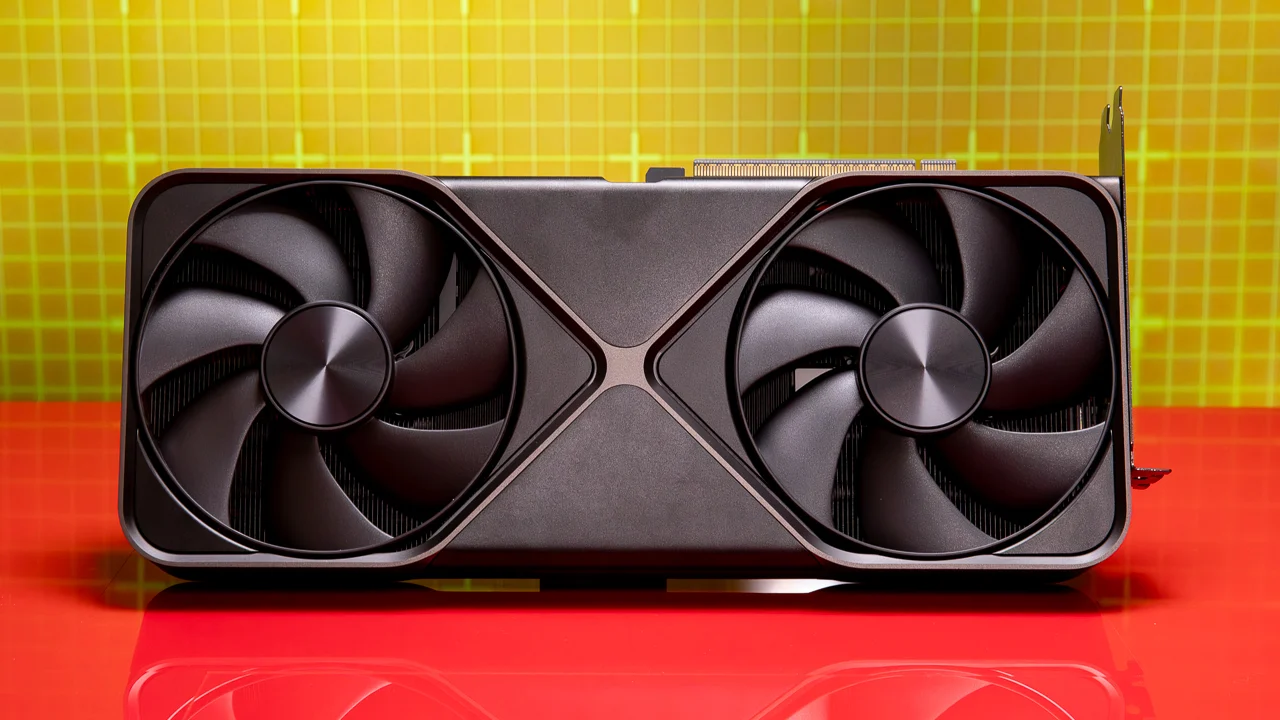In 2025, NVIDIA continues to lead the pack in graphics processing units (GPUs) for both gaming and artificial intelligence (AI), largely due to the introduction of its Blackwell architecture to the consumer market with the GeForce RTX 50 Series. These GPUs are not just about raw gaming frames; they’re deeply integrated with AI capabilities that enhance both your gaming experience and potential for AI-driven tasks.
Here’s a breakdown of the best NVIDIA GPUs for gaming and AI in 2025:
Top Tier: Uncompromised Performance
NVIDIA GeForce RTX 5090
The undisputed champion for both gaming and AI.
Gaming: The RTX 5090, powered by the Blackwell architecture (likely the GB202 GPU), offers an unparalleled gaming experience, dominating 4K workloads and slicing through ray tracing with ease. It’s built for those who demand the absolute best and are looking for future-proof performance for years to come, with the capacity to push beyond 4K into 8K gaming.
AI: This card is a beast for consumer-grade AI tasks. With a massive 92 billion transistors and over 3,352 trillion AI operations per second (TOPS), its fifth-generation Tensor Cores and Blackwell architecture innovations make it incredibly powerful for local AI development, running large language models, and accelerating creative AI applications. It’s an ideal choice for enthusiasts and professionals who need top-tier AI capabilities on their desktop.
Key AI Gaming Features:
DLSS 4 with Multi Frame Generation: This revolutionary technology leverages AI to generate up to three additional frames for every rendered frame, significantly boosting frame rates and enabling smoother gameplay, especially with ray tracing. It uses a more advanced, transformer-based AI model for greater stability and detail.
RTX Neural Shaders: Brings small AI networks directly into programmable shaders, unlocking film-quality materials and lighting in real-time games.
RTX Neural Faces & Hair: Uses generative AI to render incredibly realistic digital human faces and hair in real-time, pushing the boundaries of in-game character fidelity.
NVIDIA ACE (AI-powered game characters): Enables autonomous game characters that can perceive, plan, and act like human players, leading to more dynamic and immersive gaming experiences.
NVIDIA GeForce RTX 5080
Excellent high-end performance, a step down from the flagship but still incredibly powerful.
Gaming: The RTX 5080 offers premium 4K gaming performance, leveraging the same Blackwell architecture and its advancements in ray tracing and DLSS 4. It’s a fantastic option for those who want near-flagship performance without the absolute top-tier price tag.
AI: With its robust Tensor Cores and Blackwell architecture, the RTX 5080 is highly capable for AI tasks. While it won’t match the raw AI throughput of the RTX 5090, it provides substantial power for local AI development, content creation tools, and other AI-accelerated workflows.
Mid-Range Powerhouses: The Sweet Spot
NVIDIA GeForce RTX 5070 Ti
A strong contender for 1440p high-refresh rate gaming and capable AI acceleration.
Gaming: The RTX 5070 Ti offers a fantastic balance of performance and price for 1440p gaming, often pushing into 4K territory with DLSS 4. It’s a significant upgrade over previous generations and brings the latest Blackwell features to a more accessible price point.
AI: Still benefiting from the Blackwell architecture, the RTX 5070 Ti offers good AI capabilities for personal projects, creative applications using AI, and improving productivity. Its Tensor Cores are more than capable for many deep learning inference tasks.
NVIDIA GeForce RTX 5070
Solid performance for 1440p gaming and entry-level AI exploration.
Gaming: A great option for smooth 1440p gaming, the RTX 5070 brings Blackwell’s ray tracing and DLSS 4 improvements to a wider audience.
AI: For those looking to dabble in AI development or utilize AI-powered features in their daily workflow, the RTX 5070 provides a strong foundation.
Mainstream & Value Options: Accessible Power
NVIDIA GeForce RTX 5060 Ti 16GB
The best mainstream card, offering great value and a generous VRAM buffer.
Gaming: This card hits a sweet spot for 1080p and 1440p gaming, delivering impressive performance with the latest features. The 16GB of GDDR7 memory is a significant advantage, providing ample VRAM for modern games and future titles, ensuring a longer lifespan.
AI: The 16GB VRAM is particularly beneficial for AI tasks, allowing for larger models to be loaded and processed locally compared to 8GB cards. It’s an excellent entry point for learning and experimenting with AI, including some smaller-scale model training.
NVIDIA GeForce RTX 5060
A strong contender for 1080p gaming and basic AI acceleration.
Gaming: Offers solid 1080p performance and is an excellent choice for budget-conscious gamers who still want access to NVIDIA’s AI-powered features like DLSS 4.
AI: While more limited in raw AI compute and VRAM compared to higher-end models, the RTX 5060 still leverages Blackwell’s Tensor Cores for AI acceleration in supported applications and games.
Key NVIDIA AI Technologies Across the RTX 50 Series:
All RTX 50 Series GPUs are built on the Blackwell architecture and feature a range of AI-driven enhancements:
DLSS 4 (Deep Learning Super Sampling): The flagship AI feature for gaming. DLSS 4 uses AI to upscale lower-resolution images to higher resolutions, significantly boosting frame rates while maintaining or even improving image quality. The new Multi Frame Generation and transformer-based models in DLSS 4 represent a substantial leap.
RTX Neural Rendering: Beyond DLSS, NVIDIA is integrating AI into the rendering pipeline itself, enabling more realistic graphics for elements like characters, lighting, and textures.
NVIDIA Reflex 2 with Frame Warp: An AI-powered suite of technologies designed to reduce system latency, making games feel more responsive and giving competitive gamers an edge.
NVIDIA ACE (AI Characters): As mentioned, this technology brings AI-powered non-player characters (NPCs) to games, capable of more complex and adaptive behaviors.
NVIDIA Broadcast: Uses AI to enhance microphone and webcam feeds for streaming, video calls, and content creation (e.g., noise removal, virtual backgrounds, eye contact correction).
NVIDIA Studio Drivers: Optimized drivers and tools for creators, accelerating AI-powered features in creative applications for video editing, 3D rendering, graphic design, and more.
Tensor Cores: These specialized cores on every RTX GPU are the hardware backbone for AI acceleration, executing matrix math operations efficiently for deep learning tasks.
Choosing the Best GPU for You:
For the Ultimate Experience (Gaming & AI): NVIDIA GeForce RTX 5090. If budget isn’t a concern and you want the absolute best performance for both cutting-edge gaming and serious local AI work, this is the card to get.
For High-End Gaming & Strong AI: NVIDIA GeForce RTX 5080 or RTX 5070 Ti. These cards offer an excellent balance of raw gaming power and robust AI capabilities for demanding users.
For Mainstream Gaming & Growing AI Interest: NVIDIA GeForce RTX 5060 Ti 16GB. The generous VRAM and Blackwell features make it a versatile choice for gamers looking to explore AI without breaking the bank.
For Entry-Level Gaming & Basic AI: NVIDIA GeForce RTX 5060. A solid entry point into the NVIDIA ecosystem with access to all the core AI-powered gaming features.
As 2025 progresses, NVIDIA’s RTX 50 Series, with its foundational Blackwell architecture, is set to redefine what’s possible in both gaming realism and accessible AI computing for enthusiasts and creators alike.















